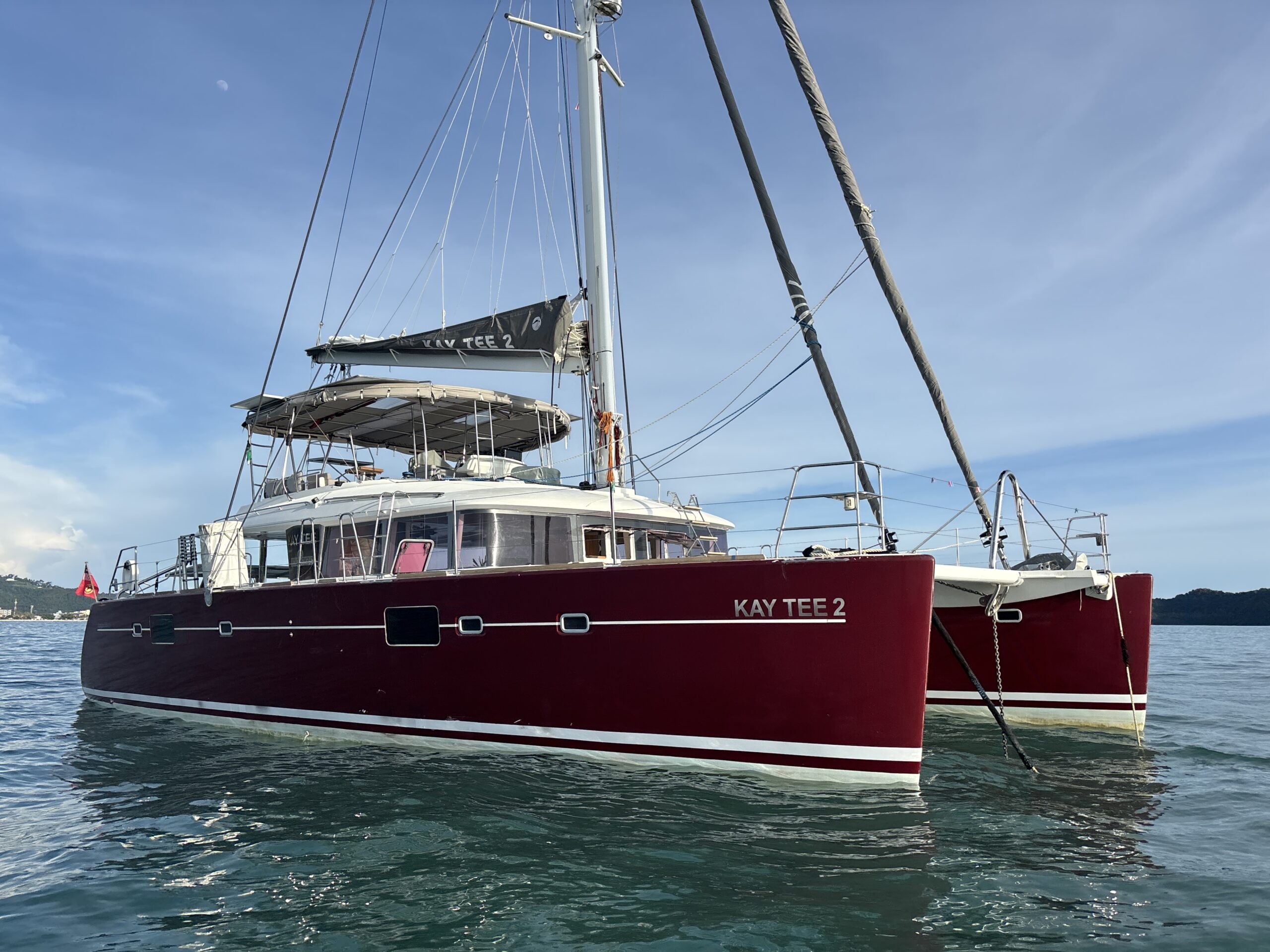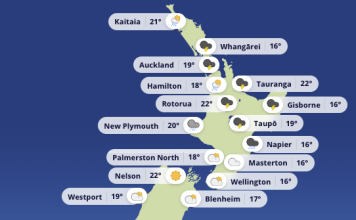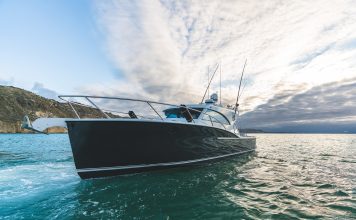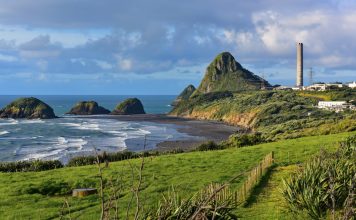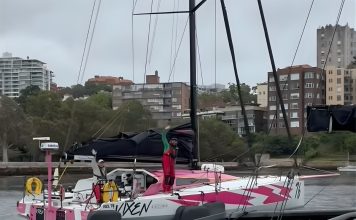As I drove Sauvage into the marina, the pitch-black of night engulfed us and I felt my heart hammering. Would I be able to berth us safely in the dark?
Seven days out from the April school holidays, the weather forecast predicted autumnal weather. Sun, wind, rain – but no cyclones. We planned our journey with some excitement; this time we would sail past Kawau Island in the direction of Whangarei. I’d have happily kept on going beyond the northernmost tip of New Zealand, all the way to Fiji, but the reality of not yet being CAT1-ready won out, yet again.

My CAT1 ‘To Do’ list isn’t very long but does include some more intensive work. Removing leaking windows is quite high on our list. Since we’ve had Sauvage, a couple of portholes – in the same place, but on opposite sides of the boat – have leaked. Not a stream of running water which would need an immediate fix, but annoyingly slow, slow drips not serious enough to have warranted immediate action. Now, three years on – three years of strategically-placed buckets to catch those slow drips – it was time to get the job done.
A quick inspection identified the point of water ingress, followed by a longer inspection which confirmed the need to remove the affected window, clean the surfaces, and then reseat the window with the help of a good layer of epoxy resin. Neve and I set to the task. Painfully, slowly, we attempted to free the window from its very strong bond but after three hours’ effort, we were frustrated to find we’d only removed about 30cm! But the job had to be done, so we put our determined hats back on and kept chipping away at the old glue. Then, blast of all blasts, the window snapped! There was no damage to the vessel, but we now had to replace an acrylic window. We felt quite deflated, but home and work were calling, so we covered Sauvage with a tarp and hoped Auckland’s weather would behave itself until we could return to complete the job.

Complete the job we did! We took away the broken window, spent a few Sundays removing the existing glue from around the frame, and found suppliers for the Perspex (in West Auckland), an undercoat specifically for marine windows, and marine glass window adhesive (both Sika products). Then we were ready for the installation.
On Good Friday we departed Cambridge in the early evening. By the time we reached Auckland it was raining and dark, but our suppliers had kindly left our materials out so we could pick them up on our way up to Whangaparaoa. Saturday was spent installing the new window and on Easter Sunday we were good to go.
We tend to be ‘fair weather sailors’ – the weather decides when we go out for a sail and when we have an on-boat jobs weekend. But we are aware we need to up our game – to be a bit more daring and prepared to simply ‘go’ because we realise that when we’re sailing on longer journeys, we simply won’t be able to stop sailing whenever the weather turns a bit.

The delay in installing the new window also brought a change in plans. PredictWind indicated that it would rain north of Kawau Island, while Waiheke Island seemed better. We’re not afraid to sail in wet weather, but don’t want to be drenched all the time, particularly on our holiday. As we were feeling decidedly adventurous – we were on a one-week work hiatus! – our plans extended to sailing across to Coromandel Harbour.
We set sail from Gulf Harbour towards Waiheke, with 10-15 knots of wind coming from our side in slightly choppy 0.8m seas. For many sailors this may sound like perfect sailing conditions, but until now we have been more like 6-10 knot sailors, sometimes motor-sailing large chunks of the way.

Now that we’re prepared to push ourselves a little more, we are learning new (for us) ways to sail Sauvage. Kirsten is still not a huge fan of sailing on a lean, so I’m finding ways to angle the sails for better balance and more speed and placing reefs in the sails before stronger winds reach us. Quite a few yachts were out, taking advantage of the good sailing – all of them with reefs in their sails. We watched incredulously as a smaller yacht passed us at a ‘rate of knots’ and also saw a near miss, where a fast yacht passed within metres of other vessels.
Feeling pleased that we’d challenged ourselves and won, we stopped the first night at Putaki Bay to pick up groceries from Countdown on Waiheke Island. We took our tender from Putaki Bay up the estuary along Wharf Road. Anyone following in our path should be aware of the shallow water – we nearly dinged our outboard on the seabed not realising how little water there was.


With a storm brewing for the afternoon, we left early in the morning for Omaru Bay. We would normally stop at Man O’War Bay, but our goal was to anchor out the storm and then ‘leap’ over to the Coromandel Harbour the next day. As expected, the wind and rain came, and we chilled for the rest of the day, feeling safe in the knowledge that the next few days would offer wonderfully calm weather.
But the next day proved windier than anticipated. Nevertheless, we left early for Coromandel Harbour as the weather looked like it would be worse by afternoon. We sailed from Omaru Bay through the gap between Ponui and Rotoroa Islands all the way in 15-19 knots of wind gusting 20-plus. Sea conditions were bumpy with a 1.5m swell under us, but we loved it. What only 12 months ago would have seemed like the end of the world felt to us that day like we’d conquered it.


Arriving at Coromandel Harbour, we anchored, and although the original plan was to head to Coromandel town, we decided to rest up until the next morning. That’s when we discovered our plans would have to change. An unexpected storm was forecast for the next day and, as tempting as it was, with work commitments, we couldn’t afford to get stuck. Instead, we decided to head into town for the morning and then head back to Whangaparaoa at noon, but we enjoyed our time so much we didn’t get away until 2pm. A small miscalculation on our part, perhaps?
And that is how, in a very unplanned way, we had our first night sail! It’s a good 6-7 hours sailing from Coromandel to Gulf Harbour. We left around 2pm which got us back to the marina at about 7pm, by which time it was already well dark. On the sail back we had had a family debrief so we each knew what we needed to do, with adjustments to our usual procedures to allow for darkness. We activated our tri-colour mast light for the first time while sailing and we used the forward port and starboard lights and our aft floodlight (generous to call it a ’floodlight’, more an aggressive trickle).

And I was impressed. The kids all got involved. They weren’t worried. Rafe, our 17-year-old, even steered us nearly all the way into the marina as the dark engulfed us.
As we were approaching Gulf Harbour, we could see the lights and the marina, but we were very much coming in using our electronic aids. Navionics provided faultless direction into the fairway, and once in the right position, I put us in reverse and we effortlessly manoeuvred into our berth. No need to panic.
Emboldened with our successful (and very unexpected) night sail, we will now extend our sailing hours, especially with very early morning starts. Watch this space! BNZ










